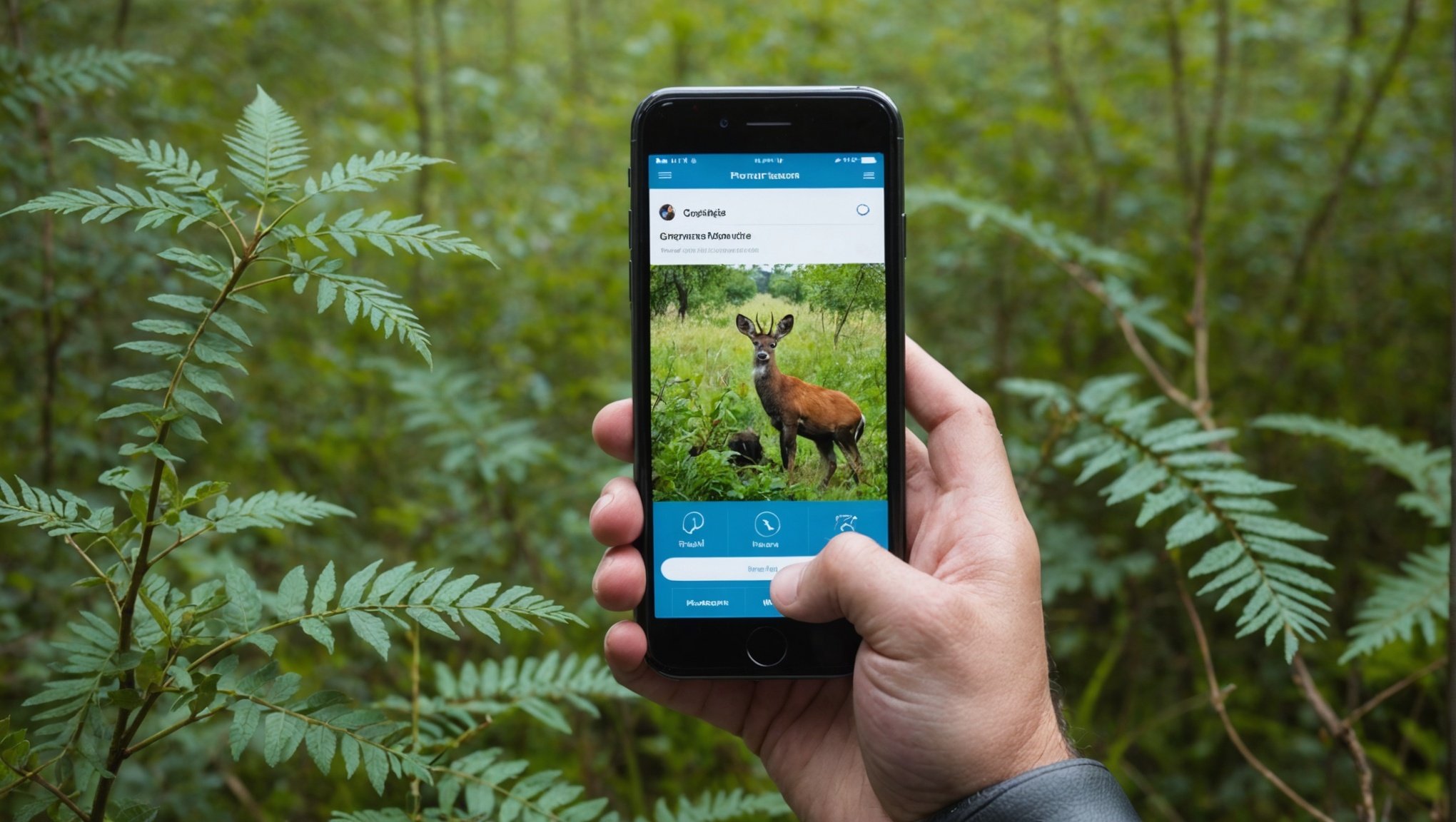The monitoring of wildlife is crucial for understanding changes in species populations and for making informed decisions about their conservation. Traditional methods of tracking animals, such as radio tagging, can be costly and time-consuming. Today, the rapid development of technology offers new possibilities for real-time data collection. One such advancement is the use of smartphones as a tool for wildlife monitoring. In this article, we delve into the various techniques that utilise smartphone technology in the quest to track and conserve wildlife.
Smartphone-based Monitoring Systems
The ubiquity of smartphones and their ever-evolving capabilities make them a powerful tool for wildlife monitoring. These handheld devices are equipped with a plethora of sensors that can record valuable data about the surrounding environment.
Additional reading : Can Smartphones Be Used to Monitor Solar Panel Efficiency in Homes?
One of the most straightforward ways to use smartphones for wildlife monitoring is through photography. The high-resolution cameras that most smartphones now come with can capture clear images of animals. These photographs, coupled with the location and time data that the phone automatically records, can create a valuable spatial dataset for each observed species.
Another technique involves using the built-in GPS of smartphones. By tracking the movements of animals equipped with a lightweight, phone-based GPS tracker, researchers can gather detailed data on animal behaviour, movement patterns, and habitat use. This information is invaluable to conservation efforts, as it helps identify critical habitats and migration corridors.
Also to discover : How to Utilize Your Smartphone for High-Precision Cooking?
Moreover, researchers are also using smartphones to record wildlife sounds. The phone’s microphone can record animal calls, which can then be analysed using complex algorithms to identify the species and track its occurrence.
Using Citizen Science Datasets
In recent years, the concept of ‘citizen science’ has gained popularity, and smartphones play a key role in this. This approach involves the public in scientific research, often through data collection. Thanks to smartphones, anyone with access to these devices can become a ‘citizen scientist’, contributing to massive datasets of wildlife observations.
Apps like iNaturalist, eBird, and Project Noah allow users to record and share their wildlife sightings. These observations, together with the automatic geotagging and timestamp provided by smartphones, offer an enormous amount of occurrence data that can be used for monitoring and conservation purposes.
The accuracy of these datasets depends heavily on the number of contributors and the reliability of their observations. However, several studies have shown that, for common species, the data collected by citizen scientists can be as accurate as traditional monitoring methods.
Leveraging Species Distribution Models (SDMS)
Species Distribution Models (SDMS) are another technique that can leverage the power of smartphones for wildlife monitoring. These models use occurrence records and environmental variables to predict where a species might be found. With smartphones, it’s possible to collect high-resolution, real-time data that can feed these models.
Researchers can use SDMS to predict the distribution of a species based on the data collected by smartphones. They can also use smartphones to validate these models, by comparing the predicted distribution with actual observations made by users.
Moreover, smartphones can also be used to collect environmental data, such as temperature or light levels, which can be used as input for the SDMS. This approach potentially increases the accuracy of the models.
Integrating Smartphones with Biome Tracking Systems
Smartphones can also be integrated with biome tracking systems – networks of sensors that monitor large ecosystems. These systems continually collect data about weather conditions, vegetation, and animal activity.
By integrating smartphones with these systems, researchers can get a more detailed picture of wildlife behaviour. For instance, they can use smartphones to photograph animals detected by the sensors, or to record additional data, like animal calls or tracks.
Moreover, by using smartphones as portable data collection devices, researchers can gather data from a larger area than would be possible with stationary sensors alone. This approach allows for more comprehensive and accurate monitoring of wildlife.
The Role of Smartphones in Wildlife Conservation
Smartphones are not only useful for monitoring wildlife; they can also play a crucial role in conservation efforts. By making it easy for people to record and share their wildlife observations, smartphones help raise awareness about the importance of biodiversity and the need for conservation.
Moreover, the data collected by smartphones can guide conservation actions. For instance, real-time tracking data can help identify areas that need immediate protection, or species that are declining rapidly.
Finally, smartphones can also help engage the public in conservation efforts. By using apps that gamify data collection, or that offer rewards for reporting wildlife sightings, you can motivate people to contribute to conservation in a fun and engaging way.
In summary, smartphones offer a powerful and flexible tool for wildlife monitoring and conservation. Whether used by professional researchers or citizen scientists, these devices can collect a wealth of data that can improve our understanding of wildlife and guide our efforts to protect it.
Integrating Smartphones with Drone Technology
Another area in which smartphones are making significant contributions to wildlife monitoring is their integration with drone technology. These unmanned aerial vehicles have, in recent years, become an indispensable tool for collecting high-resolution images and videos of wildlife from above.
Smartphones can act as the control center for these drones. Using a mobile app, researchers can pilot drones, adjust their cameras, and monitor the live feed. As the drone hovers over an area, the smartphone screen acts as the viewfinder, allowing researchers to observe wildlife in real-time without disturbing the ecological balance.
Beyond acting as a remote control, smartphones can also enhance the capabilities of drones. For instance, the GPS functionality of smartphones can provide precise navigation for drones. Also, smartphones can process the images and videos captured by the drone in real-time, using advanced software to identify species, count individuals, and map their locations.
For instance, this approach was successfully used to monitor orangutan populations in Borneo. Researchers used drones controlled by smartphones to capture aerial footage of the canopy. The smartphones then processed these images to identify nests, thereby providing an accurate estimate of the orangutan population.
Such an approach reduces the time and effort required for wildlife surveys and enables the collection of data from areas that are otherwise inaccessible. Simultaneously, it allows for close monitoring without causing stress or disturbance to the animals.
The use of smartphones in wildlife monitoring and conservation is not merely a trend but a transformative advancement. By leveraging the capabilities of these devices, researchers can gain a more comprehensive understanding of wildlife, which is crucial for effective conservation strategies.
From acting as portable data collection devices to integrating with drones and other advanced technologies, smartphones have revolutionized the way we monitor and protect wildlife. They bring together professional researchers and citizen scientists in a collaborative effort to conserve biodiversity.
Moreover, the role of smartphones extends beyond data collection. They can also engage the public in conservation efforts, raise awareness about the importance of biodiversity, and guide immediate action when needed.
The future of wildlife monitoring and conservation undoubtedly involves more sophisticated uses of smartphones. As these devices continue to evolve, we can expect them to offer more advanced features and applications that will further enhance our ability to monitor and conserve wildlife.
In conclusion, the use of smartphones has ushered in a new era of wildlife monitoring, characterized by real-time data collection, public participation, and the integration of advanced technologies. This approach holds great promise for the conservation of our planet’s precious biodiversity, and indeed, for our understanding and stewardship of the natural world.











